In-between dressing
Getting dressed to look like you're not dressed: how did we get here, why do we do it and how to nail it
You know those outfits you put on to go out to get a coffee or to walk your dog or to drop your kids off or to grab something from the store across the street? The fleeting, ephemeral looks that are cobbled together with whatever is easiest to get on to go out without much mental input?
They consist mostly of flimsy cotton shorts or elastic waist pants, the leggings you have relegated to the classification of “not suitable for exercise,” button-down shirts, simple tees, nightgowns, slippers.
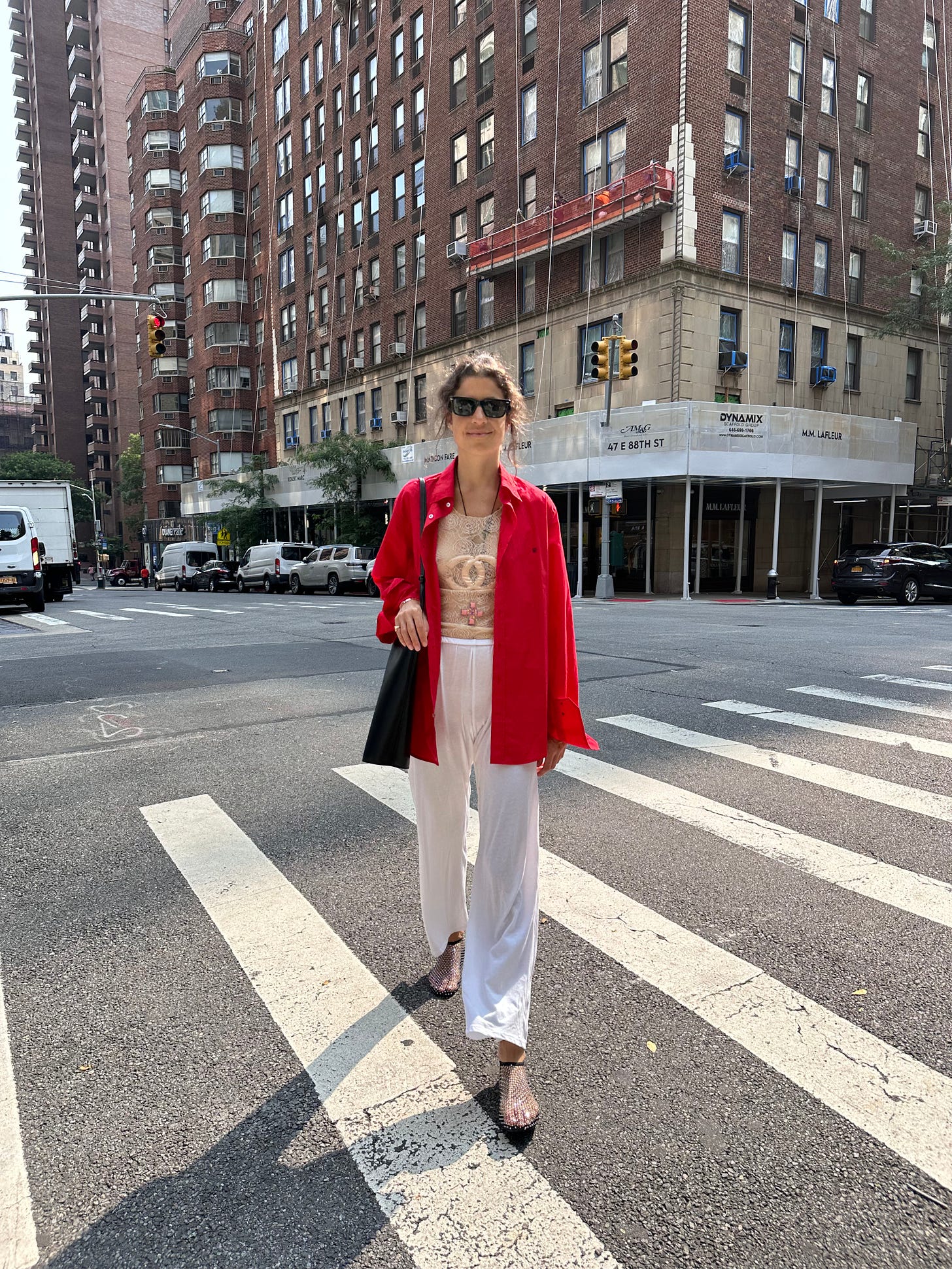
When worn more intentionally — that is, like dressing to stay in is a trend unto itself, these looks are often contrasted with a sharp edge, something deliberately constructed to be worn out so it’s clear you’re not just lounging at home. Wearing these outfits has become like the new-age equivalent of setting out your clothes from the night before.
But what’s so intriguing about the behavior is that these are the clothes that get to participate in the rich moments we are set up to experience when we’re not coming or going, here nor there — when we are moving through these sorts of transit rooms like flies on the wall: on our way somewhere but unclear of the destination. When we’re dressed to be in-between.
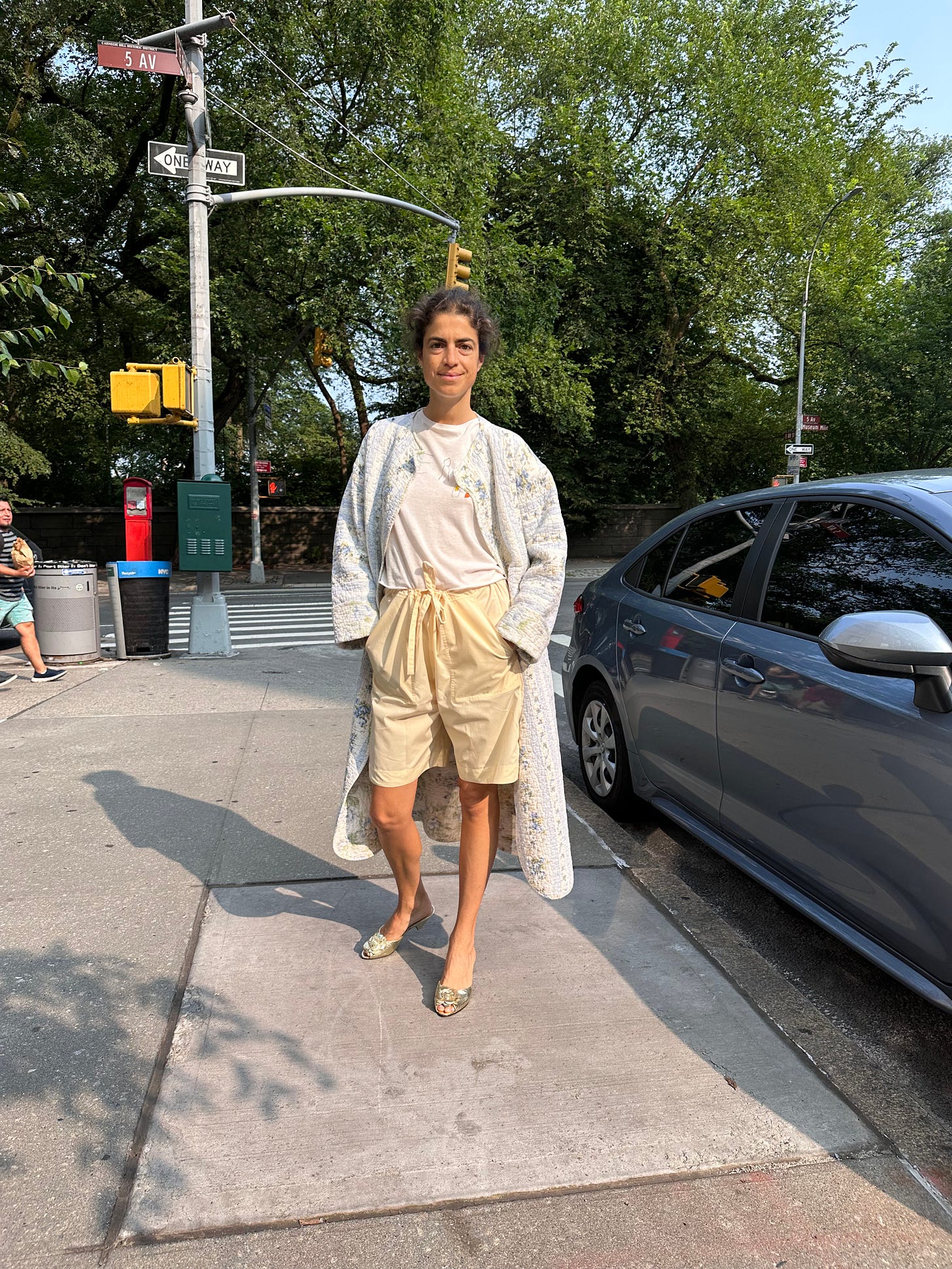
I first started to take note of these looks and to realize they were fertile ground for trend-making soon after my daughters were born, when I would get dressed to go out for coffee or to get something from the store in those liminal moments I’d leave the postpartum cocoon and try to pass off as whole while in public.
Dressing for this occasion became an escapade unto itself and I realized that much of the content of my summer wardrobe could fit into the bracket of in-between: beach shorts that looked like silk or cotton boxers, elastic waist pants, worn-out t-shirts, almost all the button downs (especially those that were striped); cotton nightgowns or slip dresses. All the clothes were already there — they just had not yet been called a trend.
How did we get here: the rise of not-getting-dressed dressing
If trends really are a conversation with each other, maybe getting dressed to look like you’re going out (dissected right here a few weeks ago — vive le halter top) is actually a response to in-between dressing, which really started to become a thing during the pandemic when we spent so much time at home, but still tried to look like we were dressed in outfits for: video meetings, calls and, uh, Instagram pictures.
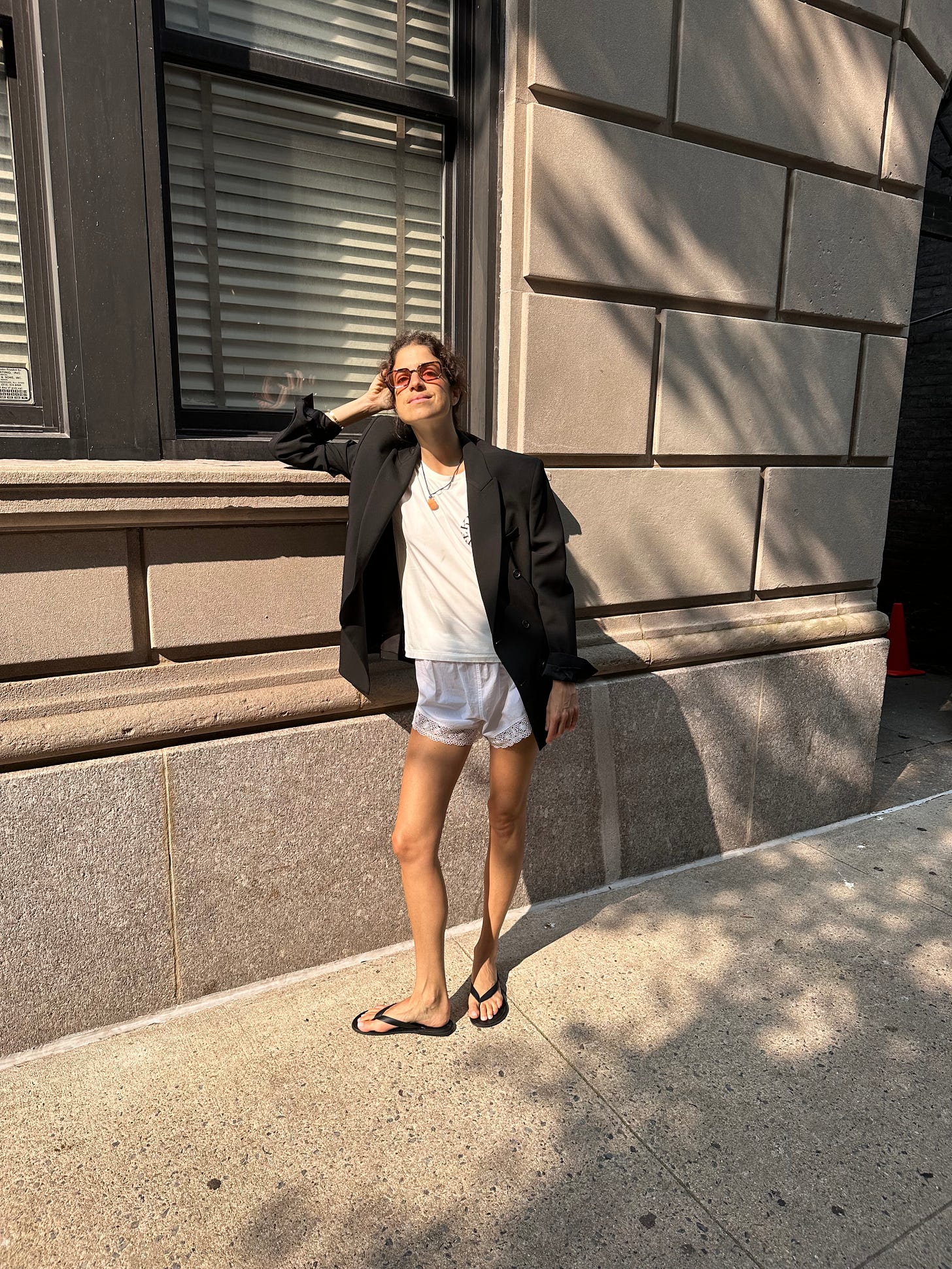
But as far as pop culture/Fashion with a capital F goes, in-between dressing became more than just residual behavior from 2020 when the new trend of wearing ankle-length Uggs with high socks and little shorts went viral because, I suspect, of a look that was captured of Bella Hadid on the streets of New York.
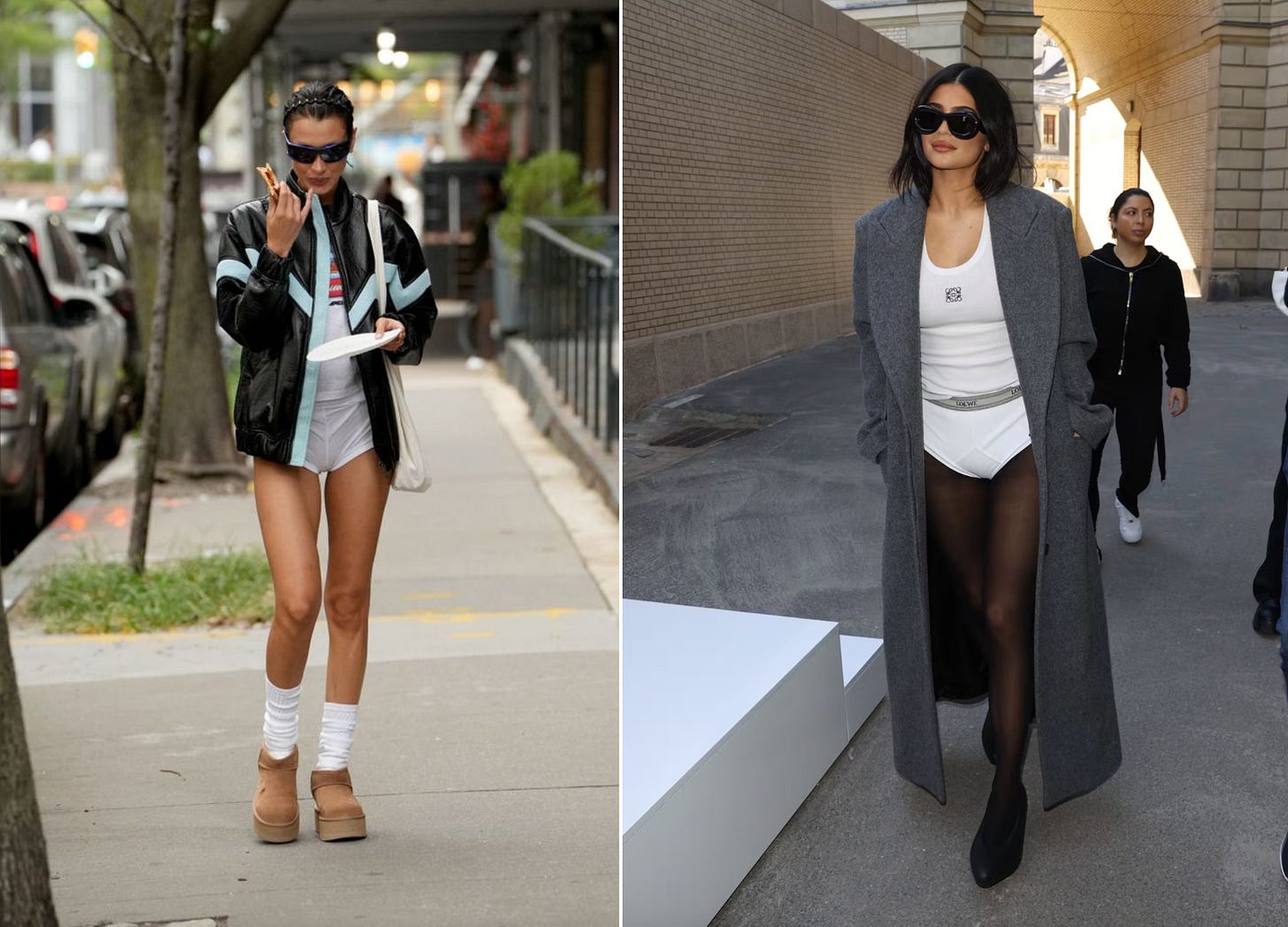
On the flip side of her expression right around the same time was a look Kylie Jenner wore to a Loewe show Paris.
The runways boasted their own instances of in-between dressing with negligee-style looks from Marine Serre, Chanel and Miu Miu in Paris
A few weeks earlier in New York, there was a striped underwear set styled over a crochet tank (with loafers and a fanny pack) from Maryam Nassir Zadeh and from Sandy Liang, an array of boudoir style looks with satin ballet flats/mary janes and knee high stockings.
And the following February (‘23), it was all about Bottega Veneta’s silkies and sock boots in Milan.
On the shoppable internet right now, the most luxurious renditions of in-between garments can be found from Prada/Miu Miu, Loewe and The Row. (And The Frankie Shop’s seasonal viral set lives on.)
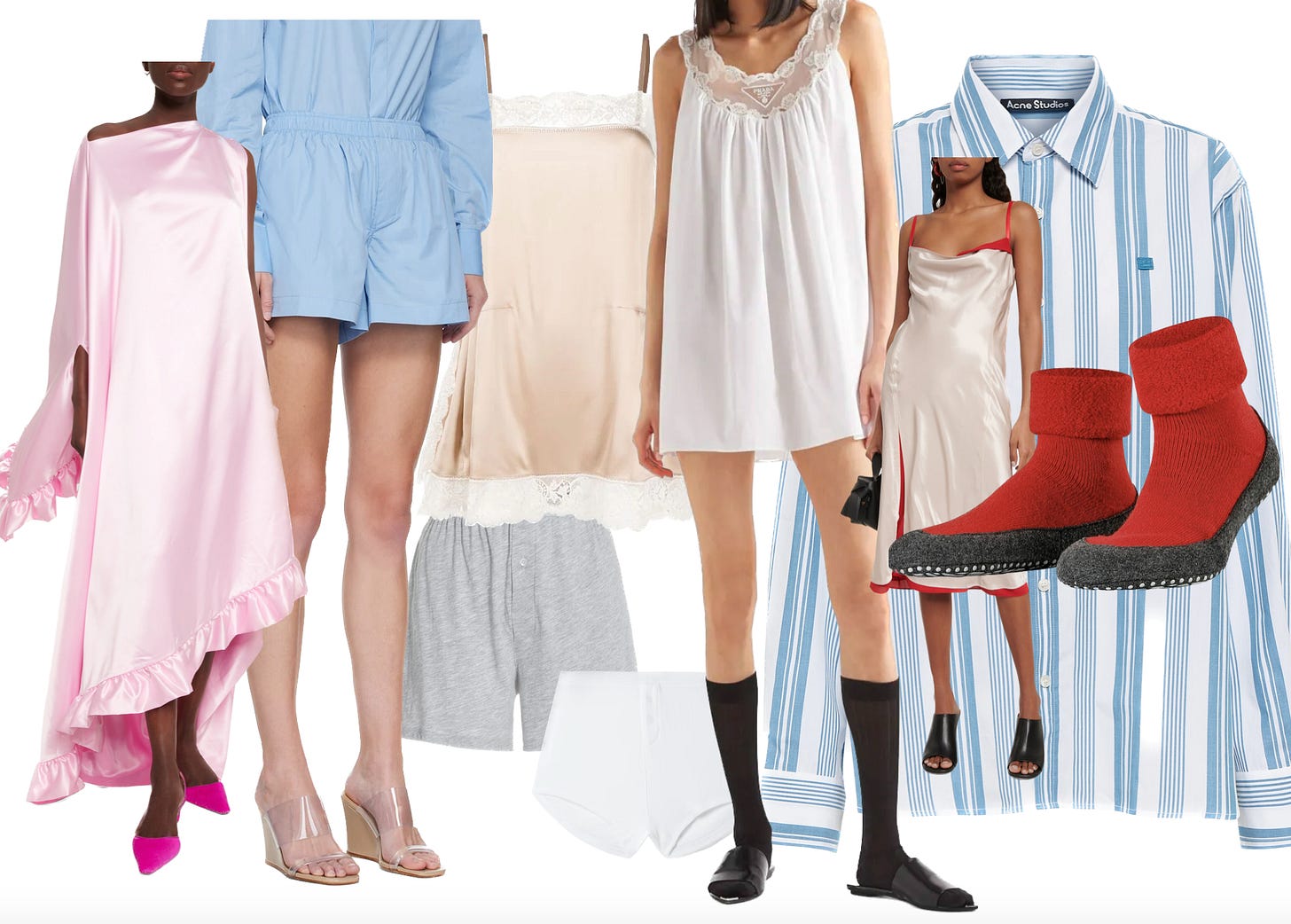
The styles are mostly comprised of menswear-inspired pairings but there are some nightgowns explicitly designed to be worn out too. From the realm of more contemporary brands, Homme Girls (which recently collaborated with J. Crew), Sleeper, and Brookyln-based Une Femme come to mind. These are examples of brands that have modeled their whole raison d’etre on in-and-out clothes.
Then you consider the rising prevalence of an intimates brand like the Florentine Loretta Caponi, formerly known exclusively for their linens and nightgowns (or I like the NY-based shop Peress too; the most recent comp in American pop culture would be Hill House Home — though this vibe is more “cottagecore”), or Charvet (men’s shirting and sleepwear) and how both have become their own sort of household names in fashion and there we have it — a trend.
How to wear it
But is there an equation to nail it? Yes — and it’s one of the more straightforward ones because the great thing about this trend is that you don’t have to shop it so much as you do reconsider how you wear your sleep clothes.

The math goes like this: two parts staying in (figure slippers and pj or beach pants/boxers, or a nightgown and mocassins) to one part explicitly going out (like a sequined top in the first instance, or a leather bag in the second one).
Some combinations to get you started:
The nightgown

You’ll pair your nightgown with either flip flops/fabric slides and a leather bag to achieve the 2:1 effect, or with closed-back shoes that are still extremely casual but do incorporate a new dynamic, figure like these moccasins (or a pair of fisherman sandals/mesh slippers/loafers).
Boxer shorts/elastic waist pants
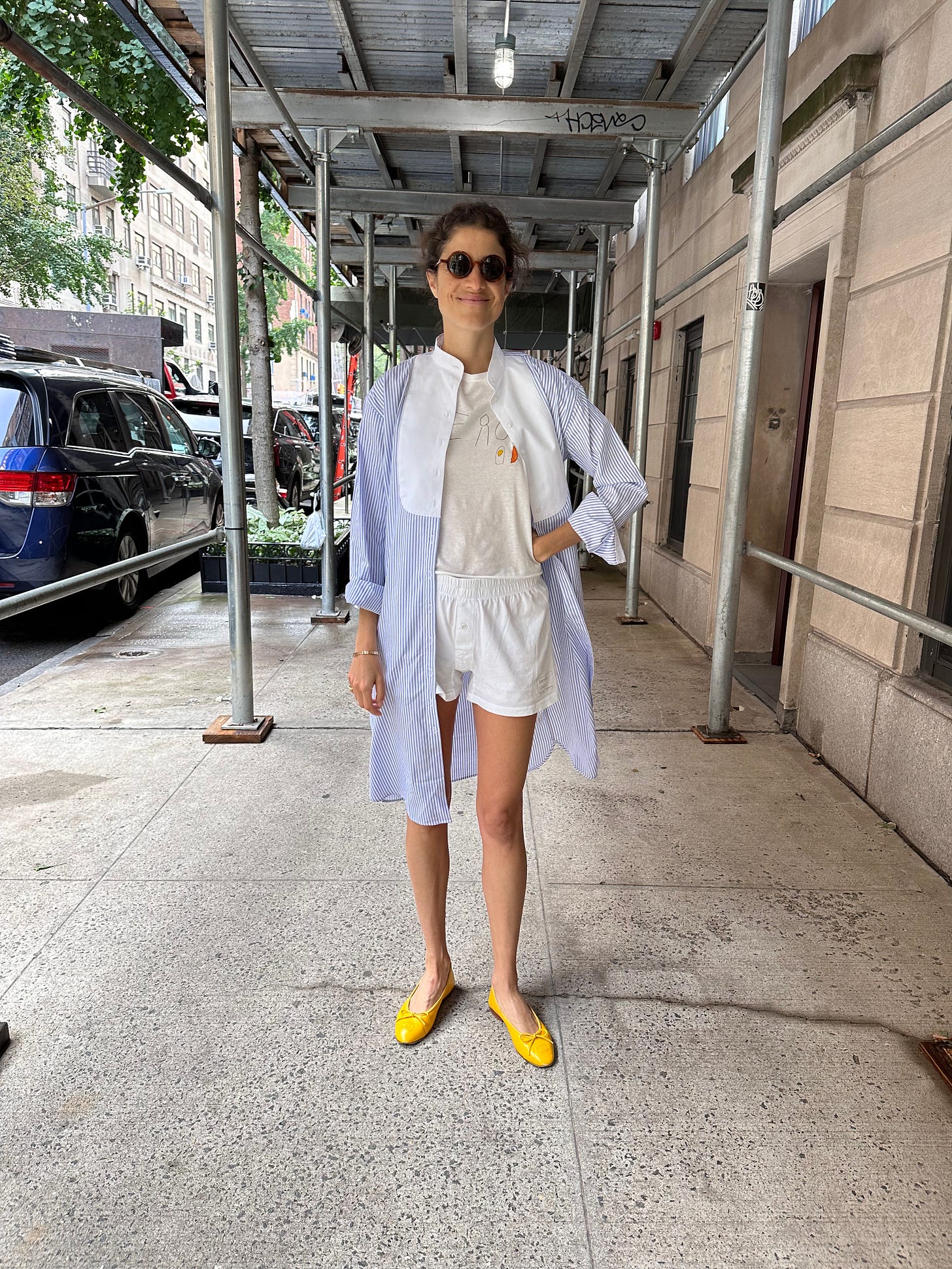
The shorts are best served with a boxy/flimsy t-shirt and closed-foot shoes — think loafers, but they can get as creative as these/these. Both the shorts or elastic waist pants (like the ones I styled into a million outfits here) would work like this or with a button-down shirt worn as a shacket with a “going out” top like this:

Works with a pair of surprising shoes like the wedges which do in a sense have this French boudoir quality about them.
Slippers/socks
The thing we haven’t touched upon is footwear — but one key component of setting a look’s vibe does take place below the knee. Just like a pair of flip-flops will make you look less dressed even while in a suit, a pair of white high socks could immediately transport your look back to the bedroom.

And then there is the thing of slippers — think Charvet, but not (Cafe Leandra!, Jill Burrows, Pearl River Mart). The old-school Turkish grandma kind. Birkenstock-style “clogs.” I like them best with kneecap leggings and the contrast of a structured handbag.
Why now: final thoughts on what’s so alluring about the trend
There is an element of practicality about the fashionification of house clothes. It is hot as hell in most cities in the northern hemisphere right now and as these garments are so slight — lightweight, easy on, easy off, and rarely with any hardware or clasps, they accommodate their wearers through the sludge of the season’s signature, balmy humidity.
And in a sort of relieving way, they never get a chance to become anything because they don’t have a finite personality — a specific place to be worn, a category to slot into and somehow this affords them a freedom to go wherever and be whatever that I find very seductive.
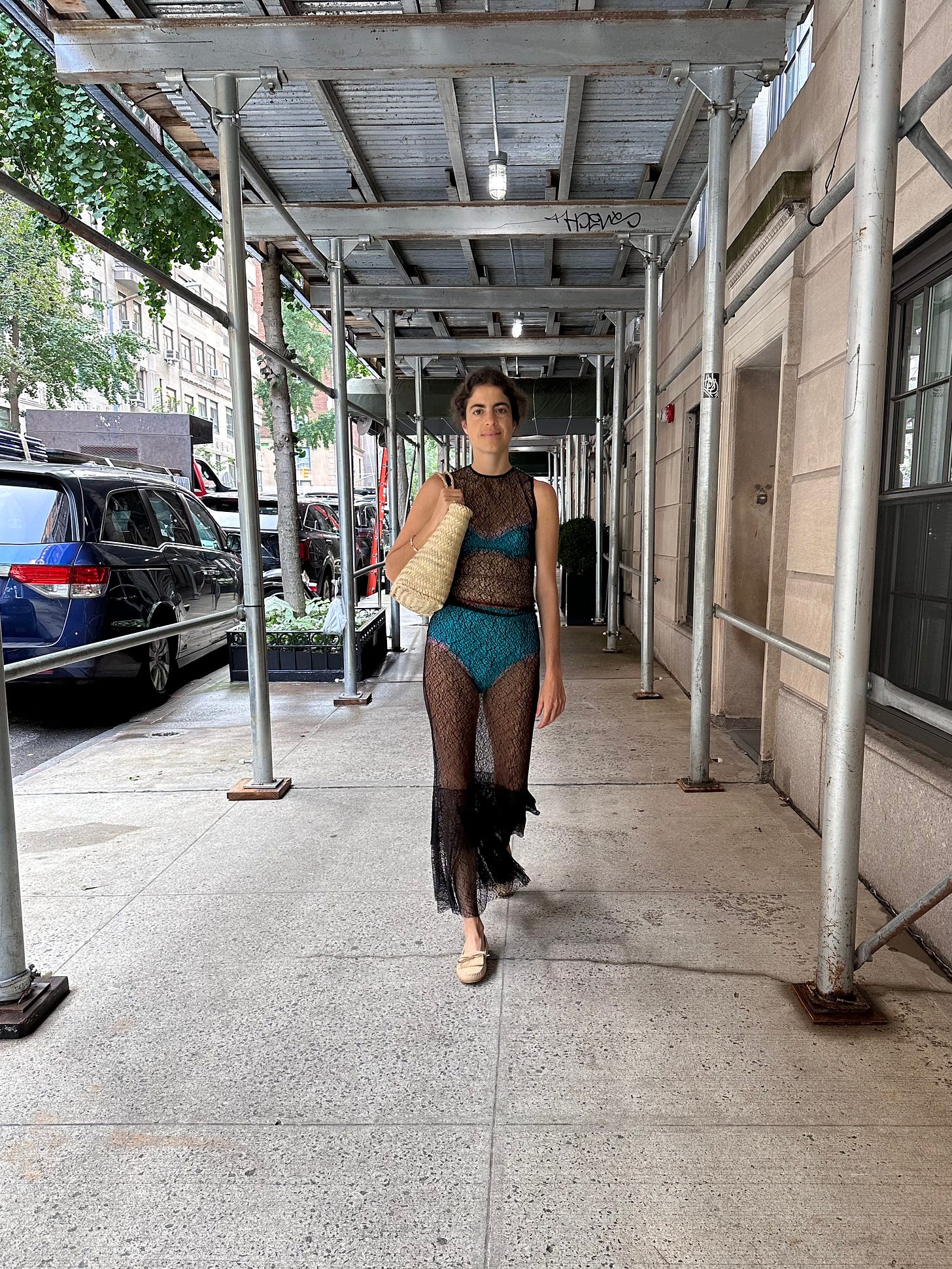
Maybe my yearning for this freedom is an age thing. In fact, maybe part of why this trend has been embraced most wholeheartedly among millennials has to do with where we find ourselves in this time-laced waiting room of neither young nor old, recently fresh from the womb of a massive transition from pre/ to pandemic to /post.
Or maybe this mode of dress is more like an expression of where we have all been in the broader cycle of trends, which churns them out even more relentlessly than usual what with them now launching on whims commanded by outlets much wider, broader, and more vast than the runway (see: TikTok).
Under this circumstance, there’s something refreshing about the offer up of a season of wearing non-clothes — an opportunity to stop and chill, to not get dressed at all. Maybe even to indulge in another sense.
If I really want to reach, I could argue that there’s a spiritual characteristic to the trend too — that there is this feeling of not wanting to unsee or detach from the intimate ways we begin to know ourselves in, as referenced prior in relation to the pandemic, moments of great transition.
There’s a quality of birth/rebirth about these moments, which I think mirrors what made dressing like this so alluring to me postpartum.
In-between clothes afford a tip-toeing instead of plunge from one you to another, a mild process of release, a tempered grasp of the unknown, of butterflying into something familiar yet still somehow radically different. They make the change feel gentle, a bit easier. I think that’s the thing about clothes and trends, about our senses more broadly: there is always some depth, something rich and intriguing under their superficial surface.


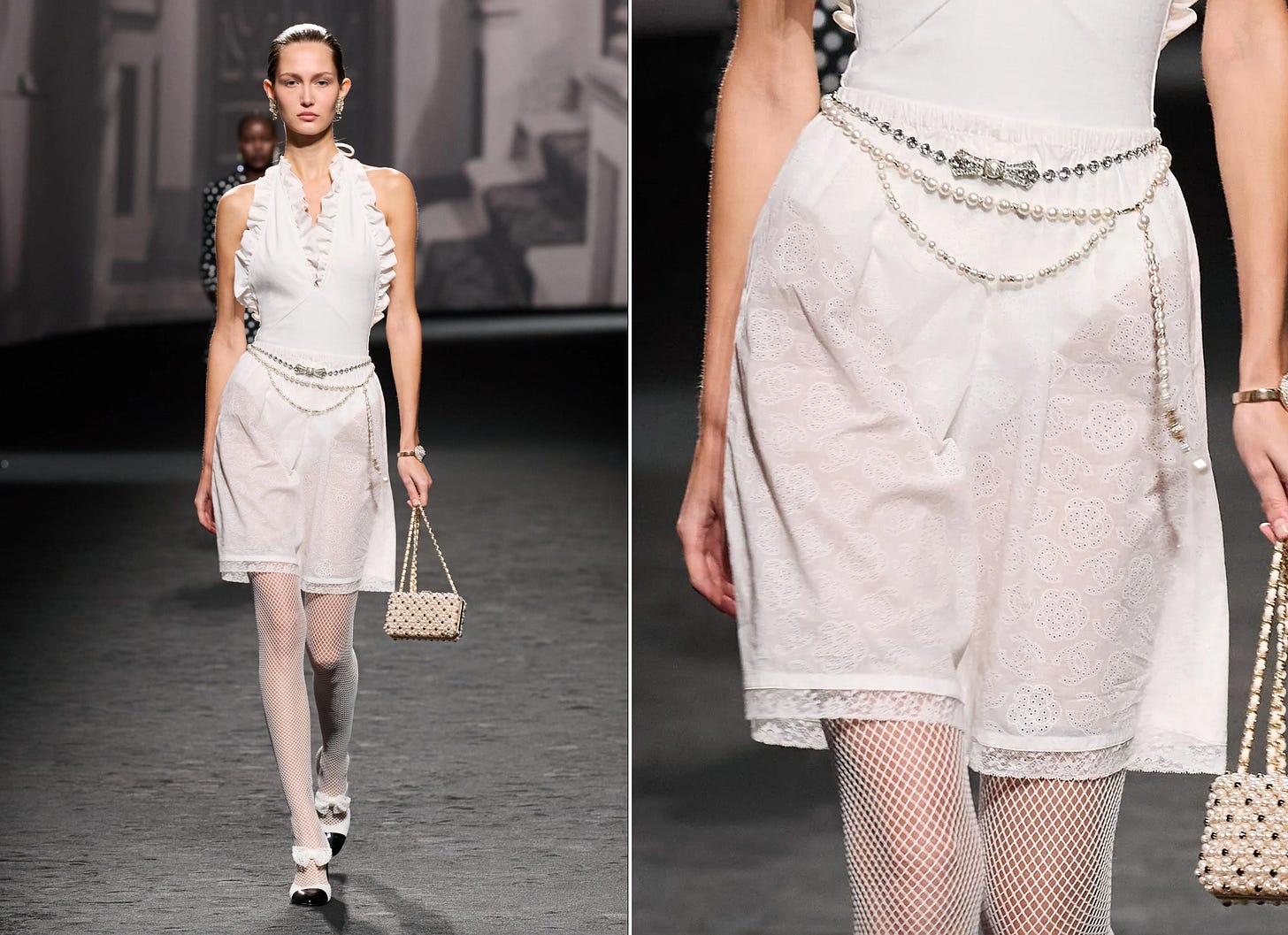
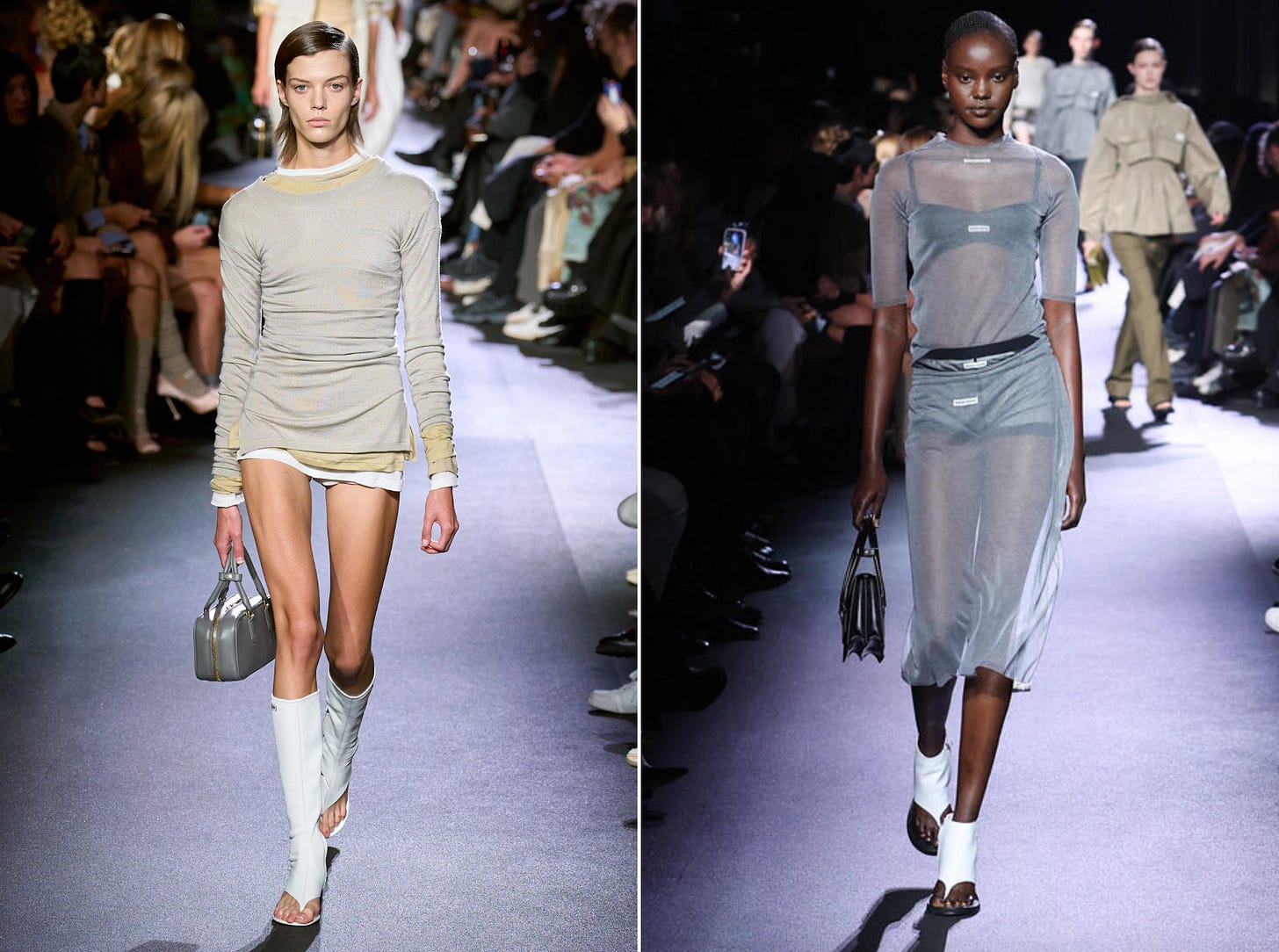

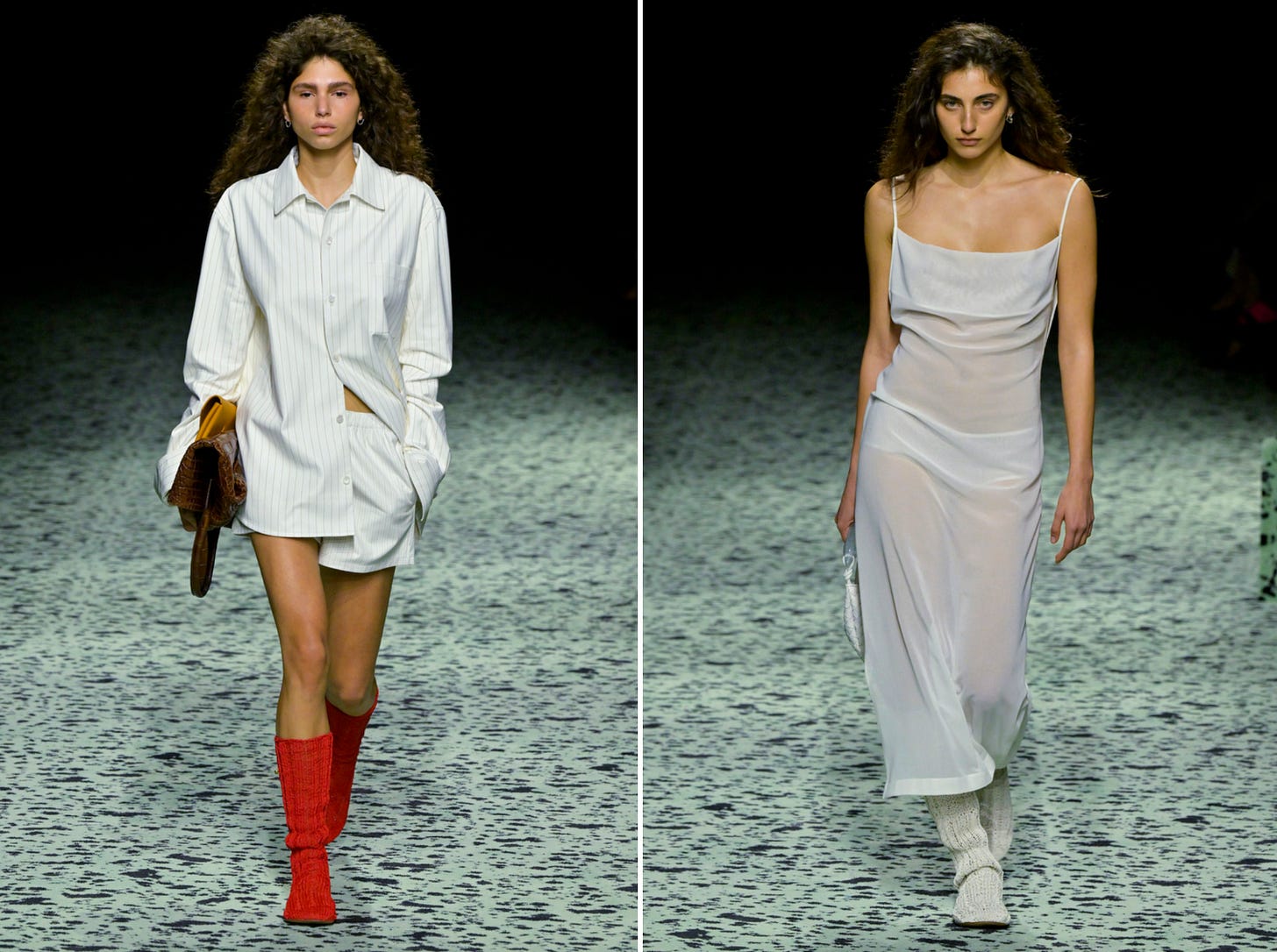
It’s amazing to me how elevated you can make a pair of jersey pyjama bottoms! You are one of the few people that can make *anything* look elegant
Loved this.
Would love to hear your take on wearing matching sets, especially silky ones. Even though I basically have the whole outfit, a top and a bottom, I’m still ambivalent about how to actually style and wear them for example out to dinner.